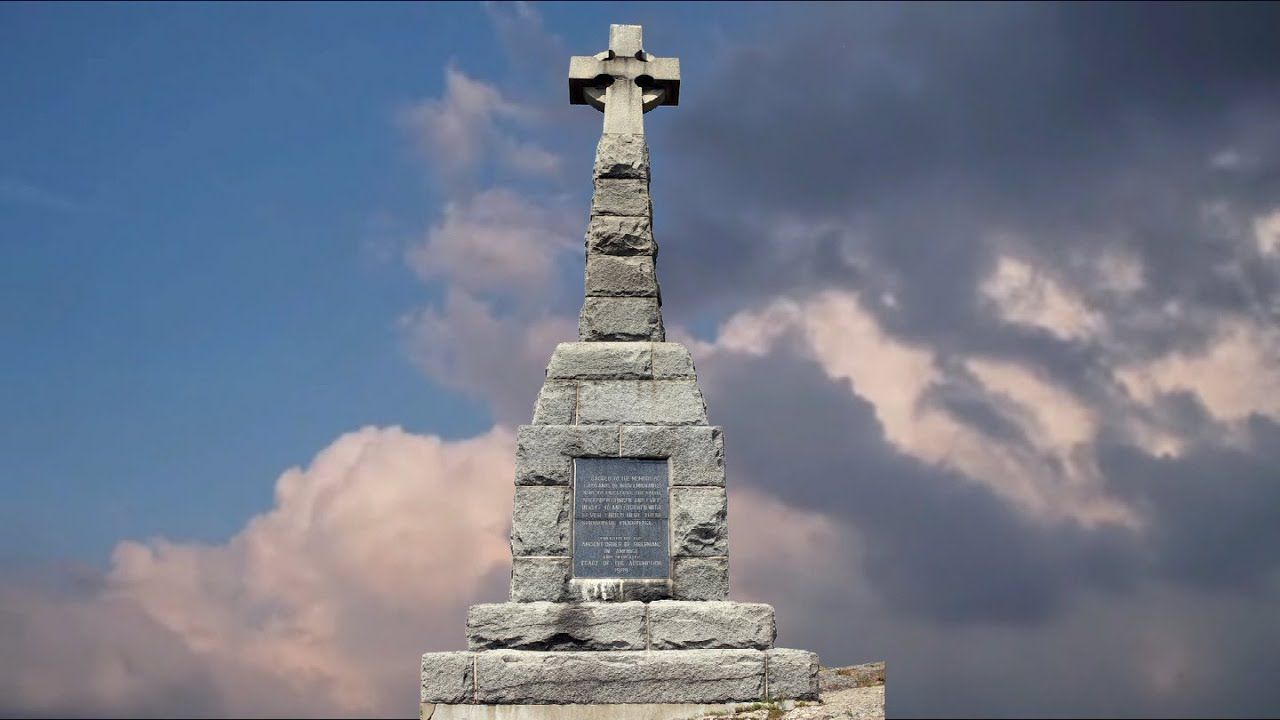A personal journey to Quebec where thousands of Irish Famine survivors arrived and were greeted with “man's inhumanity to man” searching for a better future.
The Great Irish Famine was a tragic manifestation of British rule, and the criminal avarice of the landlords, who wanted to rid the land of Irish peasantry, and in many cases, actually paid the fare on coffin ships for a people already in a state of hopeless penury.
Many of those who did survive the calvary journey on those ships died while waiting to be processed at Grosse Isle, an island in the St, Lawrence River because the Canadian authorities were wantonly unprepared for such an exodus of pitiful humanity.
Between five and seven thousand perished here in the summer of 1847 alone. Handcarts ferried the dead to a field on the western side of the island, where mass burials awaited. The undulations in the grass betrayed the last resting place of a forgotten people. The Famine ghosts still linger.
Read more: Irish Famine ships arrive at Grosse Île quarantine station in 1847
Aid for the Irish Famine survivors
There were many orphans left in the wake of such an avoidable tragedy. The Catholic Church in Canada beseeched people of all, or no religions to look to their own ancestry, and find it in their hearts to adopt those lost young souls: indeed it was their finest hour, as the citizens opened their homes to the majority of the vulnerable innocents. They were to be left with their Irish names, so that, even today, Irish names abound all across Canada. Bishops and priests died helping the sick and dying in the disease-ridden island of death.
Truly inspirational medical staff also endured their own mortality rate, for their kindness and caring to their fellow human beings. Despite countless warnings as to the unfolding horror, the infrastructure on Grosse Isle was criminally inadequate, for the thousands who arrived into that holocaust, rather than the “Promised Land” that they were told to expect.
Read more: Bravery of the Grey Nuns of Montreal during Great Famine honored
These poor people made the way for future more fortunate generations of Irish people. Disease, malnutrition, and wanton lack of empathy consigned this mass of humanity to the next world on the hapless voyage, or on the green fields of this last resting place of thousands of Irish immigrants.

Illustration showing the dire situation of a family living during the Irish Famine.
Paying my own respects
I read about the journeys a few times, and the more I thought about it, there was a recurring voice in my head, extolling me to make the long trek across the Atlantic to pay my respects to a lost generation of Irish people. Some months later, we began our journey.
New York was the first port of call, and then a flight to the Canadian French city of Quebec: it’s a relatively small city, but the visceral thrill of just walking along its wondrous Gallic boulevards, will live long in the memory. The next day, we booked a taxi and headed for the St. Lawrence River Harbour, which was approximately an hour and a half away. The compact boat was waiting for us, and the very friendly crew welcomed us on board. There were high school students also making the voyage, but we were the only foreigners on board.
Since my own school days, I’ve had a fascination with the St. Lawrence River, so to be riding its waves was really something quite special. The crew was very knowledgeable about the colonial oppression of Ireland over the centuries and I helped to fill in a few gaps for them, which they found interesting.
Celestial empathy on Grosse Isle
As Grosse Isle began to come into view, I felt an almost celestial empathy with the poor unfortunates who shared the same vista over a hundred and fifty years ago.
The captain pulled expertly into the little jetty, as a park ranger waited to give us a personal, six-hour tour of the former quarantine island. After a warm greeting, I told him that I had hitherto never even heard of Grosse Isle or its momentous place in the sad history of the Irish until I picked up the little diary in a second-hand bookshop. And now, I’m walking in the footsteps of history.
The ranger escorted us up to the hospital sheds, or, what was left of them. Walking through the silent halls was a very moving experience indeed. There wasn’t enough space in the so-called medical units, so, a vast number of men, women, and children left their last breaths hovering in the summer air over the great St. Lawrence River. Only the relatively healthy were allowed to travel on to Quebec and other destinations across Canada. The midday sun hid behind low clouds, as we made our way to the voracious graveyard.
Row after row of sinking soil showed exactly where the huge holes were dug to accommodate, still warm bodies. It was quite surreal to be walking amongst such historical suffering.
Read more: Irish Famine studies in the US should be mandatory, like the Holocaust
Various white crosses dotted across the high grass, to show what happened here. At the far end of the cemetery, there stood walls of glass, with an alphabet of names etched onto the panes. The unknown were recorded in the usual way also. As I looked at the multiple lists of Irish names, I was stunned into silence, when I came across my own name written on the glass. It was a moment that will travel with me for as long as I continue on the weary highway of life.
In the afternoon, we viewed the various churches on the island, now no longer in use. We then passed the home of the chief medical officer, Doctor George M. Douglas, who was the health superintendent on Grosse Isle from 1836 to 1864. His earnest endeavors to do all he could for the sick and dying, gained him the respect of all. He was born near the English border, in Scotland. Probably as a result of all the tragedy that he witnessed, during his tenure on the island, Doctor George Millis Douglas committed suicide on the first of June, 1864. He was 54 years old.
In 1909, the Ancient Order of Hibernians in America erected a huge Celtic cross, one of the emblems of Ireland, on the highest point of the western side of the island. It commemorates the Great Irish Famine and the unprecedented casualties in 1847 on Grosse Isle.

Celtic cross, the Irish Famine memorial, at Grosse Ile, Canada.
Thousands of people gathered for the unveiling, including some survivors from “black ‘47”. The cross bears inscriptions in the English, French and Irish languages. The different content in the English and Irish text is a testament to the debate about the causes of the “Great Hunger”, a quite momentous period in Irish history. The massive cross stands majestically on Telegraph hill, looking down the Great St. Lawrence, a waterway that will be forever linked to the coffin ships from across the Atlantic Ocean. Grosse Isle remains the most poignant site of the “Great Irish Famine”, outside of Ireland, itself.
Maybe this brief account of yet another nadir in “man's inhumanity to man” will at the very least, give cause for worldly inner reflection. May the good Lord consume them in his love, because that particular virtue was in very short supply during their brief time on this mortal coil.
Read more: 500 children found in Great Hunger workhouse mass grave




Comments